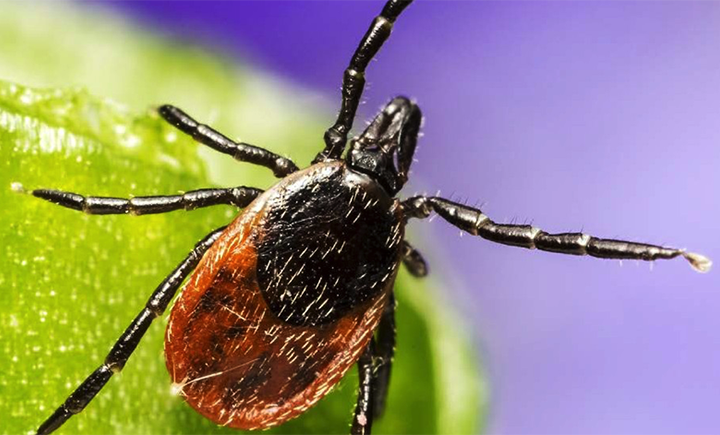Summertime and the livin’ is risky
“One of the most helpful parts of the model is that it can show just how powerful awareness is in reducing the number of Lyme disease cases.”

While not quite as ominous as the prospect of a New York winter, summer will bring its own set of challenges — one of which is the dreaded tick.
Ticks can crawl around all year long, but they are most prevalent during warmer weather, and these arch-enemies of summer fun bring with them deadly Lyme disease.
Binghamton University Professor of Biomedical Anthropology Ralph Garruto has been researching Lyme disease for nearly seven years. He has been collecting data with help from graduate students Amanda Roome and Rita Spathis, Associate Professor of Biological Sciences Julian Shepherd, as well as a team of undergraduate students.
His research has found that people tend to put themselves at risk for Lyme disease without even knowing it.
“People only think about ticks when they’re in the middle of a dense forest or on an extended nature hike, but ticks are just as prevalent in backyards or on college campuses,” Garruto says.
Even something as simple as wearing shorts and a tank top or stepping off the sidewalk into a grassy area can put people at risk, he explains. That risk is especially high in New York and the Northeast, where Lyme disease is now endemic.
“We observe people’s walking patterns, the environment and even what they’re wearing to understand how much risk people are taking on,” Garruto says.
While Garruto has been collecting an abundance of data on Lyme disease, he needed a way to put that data together to better understand when this public health hazard was most likely to result in human cases of Lyme disease and what factors were most likely to keep people safe.
A collaboration with Assistant Professor Nasim Sabounchi gave Garruto exactly what he needed.
Sabounchi is a member of the Systems Science and Industrial Engineering Department and an expert on systems modeling and analysis.
Along with former graduate student Nasser Sharareh, MS ’15, PhD ’17, Sabounchi transformed Garruto’s data on ticks and Lyme disease into a model-based risk assessment.
The model outlines how the various factors influenced each other in complex ways and gives Garruto’s data a way to predict how something like awareness can change the number of people contracting Lyme disease in any given year.
The resulting system was published by the online journal Royal Society Open Science.
“Overall, most studies have only looked at a limited number of factors associated with Lyme disease, like temperature or geographic location,” Sabounchi says. “With Garruto’s data, our model is able to also include factors like human behavior and community awareness.”
While temperature and geographic location may determine the presence of ticks that carry the Lyme disease pathogen, human behavior and overall awareness can tell researchers how many people will likely become infected.
“One of the most helpful parts of the model is that it can show just how powerful awareness is in reducing the number of Lyme disease cases,” Sabounchi says.
Garruto originally began his research when he saw how confused the public was about the prevalence and treatment of Lyme disease.
“We want people to be aware and to take the proper precautions this summer and fall,” he says.
Lyme disease can only successfully be treated with antibiotics, and an early diagnosis can be lifesaving.
The prevalence of Lyme disease research at Binghamton University has brought an annual Lyme Disease Conference to campus every spring, and there are plans to develop a Lyme and other tick-borne disease research center in conjunction with the School of Pharmacy and Pharmaceutical Sciences and with faculty and researchers from half a dozen departments within the University.
While Sabounchi’s model was created using data from Broome County, the simulation could be customized for different regions based on their own tick populations.
Ultimately, both professors hope that this research will encourage people to be more aware and to get treated quickly.
“The model clearly shows that human behavior is crucial when it comes to Lyme disease,” Garruto says. “Awareness and early detection are key.”

